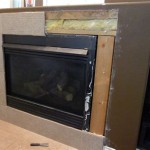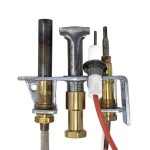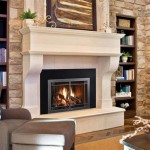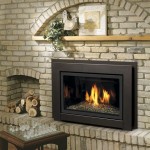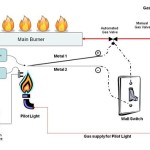Cleaning a Brick Fireplace: A Comprehensive Guide
A brick fireplace, a focal point in many homes, provides warmth and aesthetic appeal. However, consistent use results in soot, ash, and other deposits accumulating on the brick surface, diminishing its attractiveness and potentially impacting indoor air quality. Maintaining a clean brick fireplace is essential not only for visual appeal but also for safety and overall home hygiene. Regular cleaning prevents buildup that can become difficult to remove over time and allows for easier identification of potential structural issues within the fireplace itself.
This article provides a detailed guide on effectively cleaning a brick fireplace, covering the necessary preparations, cleaning methods, and preventative measures to maintain its pristine condition. The information presented aims to equip homeowners with the knowledge to undertake this task safely and efficiently, ensuring a beautiful and functional fireplace for years to come.
Preparing for the Cleaning Process
Before commencing any cleaning activity, preparation is crucial for safeguarding both the surrounding area and the individual performing the task. This involves gathering the necessary materials and taking appropriate safety precautions to mitigate any potential risks associated with cleaning agents and debris.
Firstly, gather the required cleaning supplies. These include: a stiff-bristled brush (preferably with nylon bristles, as metal can damage the brick), a vacuum cleaner with a hose attachment, a bucket, trisodium phosphate (TSP) or a commercial brick cleaner, a sponge, rubber gloves, eye protection (goggles), a drop cloth or plastic sheeting, and clean water.
Next, protect the surrounding area. Lay down a drop cloth or plastic sheeting to cover the floor and any nearby furniture. This prevents splattering and protects surfaces from potential damage from cleaning solutions or dislodged debris. Consider taping the edges of the sheeting to the floor to secure it in place and prevent it from shifting during the cleaning process.
Personal safety is paramount. Always wear rubber gloves to protect skin from harsh cleaning chemicals. Eye protection, such as goggles, is also essential to prevent splashes from entering the eyes. Ensuring adequate ventilation is equally important. Open windows and doors to allow for proper airflow, especially when using cleaning solutions that emit fumes. A dust mask can also be worn to minimize the inhalation of dust and soot particles.
Effective Cleaning Methods for Brick Fireplaces
Several cleaning methods can be employed to effectively remove soot and grime from a brick fireplace. The choice of method often depends on the severity of the buildup and the type of cleaning agents preferred. This section outlines both a dry cleaning approach and a wet cleaning approach utilising chemical solutions.
Begin with dry cleaning. Use the vacuum cleaner with the hose attachment to remove loose soot, ash, and debris from the brick surface and the firebox. Pay particular attention to crevices and corners where buildup tends to accumulate. Utilize the stiff-bristled brush to gently scrub away any remaining loose particles. This initial dry cleaning step is crucial as it preps the surface for the subsequent wet cleaning and reduces the amount of grime that the cleaning solution will need to tackle.
Moving on to wet cleaning with TSP, mix TSP with warm water according to the manufacturer's instructions. TSP is a powerful degreaser and cleaner, but it is essential to handle it with care due to its corrosive nature. Wearing gloves and eye protection is essential. Apply the TSP solution to the brick surface using a sponge, working in small sections. Allow the solution to dwell on the brick for a few minutes to loosen stubborn stains. Use the stiff-bristled brush to scrub the brick thoroughly, paying particular attention to heavily soiled areas. Rinse the brick with clean water, using a sponge to remove any residual TSP solution. Repeat the rinsing process as necessary until all traces of the cleaner are gone. TSP can lighten the colour of brick slightly, so test in an inconspicuous area first if concerned about colour change.
Alternatively, consider wet cleaning with a commercial brick cleaner. Numerous commercial brick cleaning products are available, offering varying levels of strength and application methods. Always read and follow the manufacturer's instructions carefully. Most commercial brick cleaners are designed to be applied directly to the brick surface, allowed to dwell for a specified period, and then scrubbed with a brush and rinsed with water. When selecting a commercial brick cleaner, consider the type of brick in the fireplace and choose a product that is specifically formulated for that material. Some brick cleaners may contain harsh chemicals, so proper ventilation and protective gear are essential.
For stubborn stains, a poultice method can be employed. This involves creating a paste from a mixture of baking soda and water, or a commercial poultice product. Apply the paste to the stained area and cover it with plastic wrap. Allow the poultice to dry completely, which may take several hours or even overnight. Once dry, scrape off the poultice and rinse the area with clean water. This method is particularly effective for drawing out deeply embedded stains.
Preventative Measures and Ongoing Maintenance
Preventing excessive buildup of soot and grime is far easier than removing heavily ingrained deposits. Implementing preventative measures and establishing a regular maintenance routine will significantly reduce the effort required to keep a brick fireplace clean and ensure its longevity.
Consider annual chimney inspections and cleaning. A professional chimney sweep can thoroughly clean the chimney flue, removing creosote and other debris that can contribute to poor combustion and increased soot production. Regularly inspecting the chimney for damage, such as cracks or leaks, is also essential for safety and preventing further deterioration. A clean and well-maintained chimney promotes efficient burning and reduces the amount of soot that accumulates on the fireplace brick.
Burn seasoned firewood. Using dry, seasoned firewood is crucial for cleaner burning. Wet or unseasoned wood produces more smoke and soot, leading to increased buildup on the fireplace brick and in the chimney. Seasoned firewood has a moisture content of less than 20% and burns more efficiently, producing less smoke and creosote. Store firewood properly to keep it dry and protected from the elements.
Establish a regular fireplace cleaning schedule. Wipe down the brick surface with a damp cloth or sponge every few weeks to remove light dust and soot. This prevents grime from becoming deeply embedded in the brick pores. Periodically (every few months), perform a more thorough cleaning using a mild cleaning solution, such as dish soap and water. Promptly address any spills or splatters on the brick surface to prevent staining. Regular maintenance will significantly reduce the need for harsh cleaning chemicals and extensive scrubbing in the long run.
Use a fireplace screen. Installing a fireplace screen helps to contain sparks and embers, preventing them from landing on the floor and potentially causing damage or fire hazards. A screen also reduces the amount of soot and ash that escapes from the firebox and settles on the surrounding brick surface. Choose a screen that is appropriately sized for the fireplace opening and constructed from a durable, heat-resistant material.
Proper ventilation is essential during and after fireplace use. Ensure that the damper is fully open when lighting and using the fireplace to allow for proper airflow and the expulsion of smoke. After the fire has completely extinguished and the ashes have cooled, open a window or door to ventilate the room and remove any lingering smoke or odors. This helps to prevent the buildup of soot and reduces the potential for indoor air pollution.
By adhering to these preventative measures and incorporating a regular cleaning schedule, homeowners can maintain the beauty and functionality of their brick fireplaces while minimizing the effort required for cleaning and upkeep. This ensures a warm, inviting, and aesthetically pleasing focal point in the home for years to come.

How To Clean Brick Fireplace Royal Stone Care

Mortar Wash Brick Fireplace Makeover Dimples And Tangles

How To Clean A Fireplace Diy Basics

How To Clean Brick Fireplace Kitchen Infinity

How To Clean A Brick Fireplace The Family Handyman

How To Clean Fireplace Bricks Cleanup Team

How To Create An Exposed Brick Feature Wall Or Fireplace And Clean Maintain It Like Expert Manchester Evening News

How To Clean Brick Fireplaces Mantels Hearths And More My Space

How To Clean Fireplace Bricks Simple Practical Beautiful

Ten Things To Know Before You Whitewash Your Brick Re Invintage Home
Related Posts

